South America is a mecca for travelers looking to experience different cultures, landscapes, outdoor adventures, and of course a variety of different cuisine. For my friend, Rachel, and I it had long been a dream to explore this land of contrast between ancient pre-Incan civilizations, Incan ruins, and Spanish colonization. We planned to travel together for three months and experience as much as time and more importantly, our budget, would allow.
We didn’t have a direct route planned, but here is how we spent our first month in South America.
1 Month Itinerary (Brazil, Argentina and Chile)
Day 1-4: Rio de Janeiro, Brazil
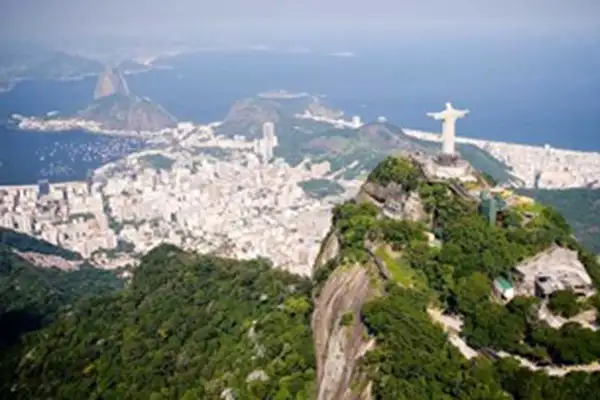
We decided to fly into Rio de Janeiro primarily as it was the cheapest flight we could find. Our first couple of days in Rio consisted of acclimatizing to a new city and getting over slight jetlag. We treated ourselves to nice accommodation and stayed in Copacabana, a couple of blocks from the beach so we could have some beach time before we travelled south where it was going to be colder. We arrived at the beginning of July, which is winter in this part of the world. It’s a nice time to visit if you don’t mind a slightly cooler climate (it was rarely below 50 F) and a bit of rain.
In Rio we were first introduced to what would become a staple diet for us on our trip, consisting of rice, beans, and meat for dinner and sweet cakes, and scrambled eggs for breakfast. We also tried a typical rodízio steakhouse restaurant where you pay a set price and the waiters will bring around different plates of meat for you to choose whatever you like. In Copacabana we also went to a Pizza version of this and paid about $11 each for a full meal and a couple of drinks.
We were also keen to see the main sites of the city. We found the best way to do this in the short time we had was to do a day tour, which cost about $55 each. The tour includes a visit to the Lapa steps, the life’s work of Chilean artist Jorge Selaron, a visit to the most famous landmark in Rio, the Christ the Redeemer Statue, and finally a cable car ride up the Sugarloaf Mountain at sunset. It was definitely worth the price, although if you’re feeling slightly more adventurous, not so flush with money, and have a bit more time you could equally get public transport or even taxis to each site.
We debated traveling to Iguazu Falls via Paraty as we had heard that it is beautiful but we decided financially and time wise we were better off heading straight to Foz do Iguacu on an overnight bus. If you have the time, I would definitely recommend including a day or two in Paraty before going on to Foz do Iguacu. Instead, we got a bus from Rio de Janeiro to Foz de Iguazu, which cost roughly $65 and was advertised as being 24 hours. However, we were soon to learn the realities of travelling by bus in South America.
Day 5-8: Foz do Iguacu, Brazil & Puerto de Iguacu, Argentina
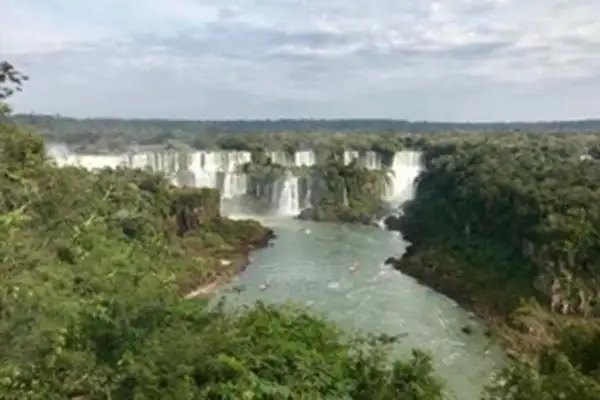
The 24-hour bus turned out to be closer to 28 hours so instead of arriving relatively early in the day we arrived in Foz do Iguacu as nightfall was approaching. We had toyed with the idea of staying in the town itself when booking our accommodation but instead chose to stay in an Eco lodge right next to the entrance of the national park. This turned out to be a wise decision. We got a taxi from the bus station to the lodge where we used our padlocks for the first time… on the window in our room, which didn’t stay closed otherwise. There wasn’t much around the area as the entrance to the park is a good 15 to 20 minute drive from the town. However, our lodge did a nice dinner of beans and rice for $6 per person.
On our first morning, we walked down the driveway of our lodge, about 100 meters to the left and we were at the entrance to the park. Included in the entrance fee is the bus, which runs from the entrance to the trails from which the spectacular falls can be viewed. Like most of the big attractions we visited on our trip, it was very crowded, however that didn’t take away from the stunning natural beauty of the falls. In our time in Iguacu, we also visited the Parque des Aves. This family founded and run Bird Park is a must for anyone, not just bird lovers. We also took a day trip (via taxi, organized by our accommodation) to the Argentinian side of the falls. The trails on the Argentinian side were longer and more clearly sign posted and great to get some exercise, although still very crowded. If you have the time, it’s definitely worth visiting. Whether the falls are better on the Brazilian or Argentinian side…the debate rages on.
Day 9-12: Corrientes, Argentina

To get to Corrientes we took a public bus from outside our accommodation in Foz do Iguacu to the Argentinian town of Puerto de Iguacu. We spent the day there and took an overnight eight-hour bus to Corrientes, arriving early in the morning.
Corrientes has a beach on a river and is a quiet yet vibrant large town. It did not disappoint, and gave us a real feel for Argentinian life. We spent a couple of days on the beach, although we didn’t brave swimming in the river. We also explored the city including the street art and the book fair, which was on at the time we were there.
We quickly learned that the priorities to look for in a dorm room are:
Easily accessible plug sockets, preferably in each bunk.
Individual lights.
Spacious rooms.
Upper bunks easily accessible and not too high. Personally, I preferred staying in mixed rooms but there are usually female and male dorms available too.
Day 13: Salta, Argentina
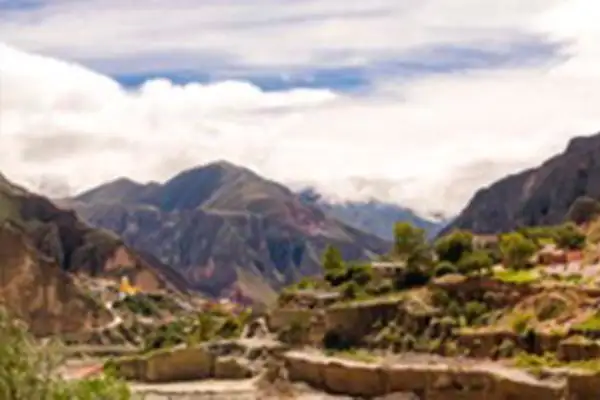
Our next stop was Salta. We stayed for one night as it was really just a brief stop for us on the way to the northern desert area of Argentina. We found it to be very lively, particularly at night. There were lots of restaurants, bars, and clubs to choose from, many of which featured peña bands and dancers, which are traditional and very popular in this area. The next day we got the bus from Salta to Juyjuy, the gateway city to the more northern areas, and then from Juyjuy to Maimara. The journey took only about five hours.
Day 14-17: Maimara & Tilcara, Argentina
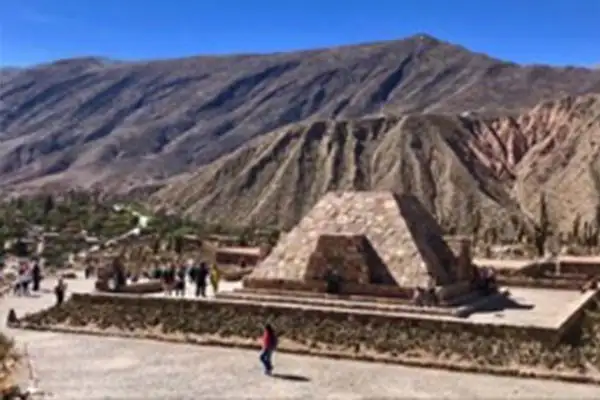
We had decided to stay in Maimara, which is less than four miles outside of Tilcara, the main town in the area to stay in. We had met a fellow traveler in Corrientes who had recommended Maimara and in particular a homestay she had stayed in there. This was really our first experience of being in more remote regions and we loved it… for a certain amount of time. Maimara is very small but there is lots going on. The first evening we arrived, there was a local festival on with food, dancing, and local handmade crafts for sale.
On our first full day we took a local taxi into Tilcara, visited Pucara de Tilcara, a pre-Hispanic archaeological site, and trekked to El Garganta del Diablo (the Devil’s throat) which took about two hours and is definitely worth walking rather than getting a taxi, if you can. Tilcara, although quite touristy, is a strikingly picturesque town and full of life.
The next day we took a local bus to Pumamarca and from there took a tour to Salinas Grandes. The drive alone is breath taking and reaches an altitude of 4,000 meters. The salt flats themselves were like nothing we’d ever seen before and the views, as well as the wind, blew us away.
Day 18-21: Cordoba, Argentina
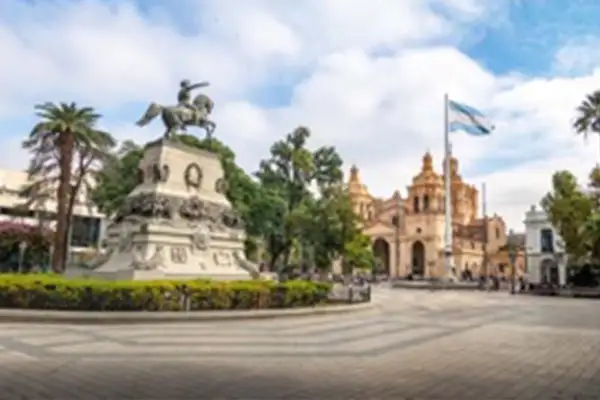
From Maimara we took the bus back to Juyjuy and then another bus from Juyjuy to Cordoba. It felt very strange being back in a city after what felt like a long time in the remote northern regions. Cordoba is a city for everyone. It is full of history and culture, and has some modern areas as well as lots of cute little streets, cafes, and shops. It’s also where we did our first of many “free” walking tours. These tours are usually tip based and some will suggest a tip amount whereas others will leave it completely up to you.
Day 22-25: Mendoza, Argentina
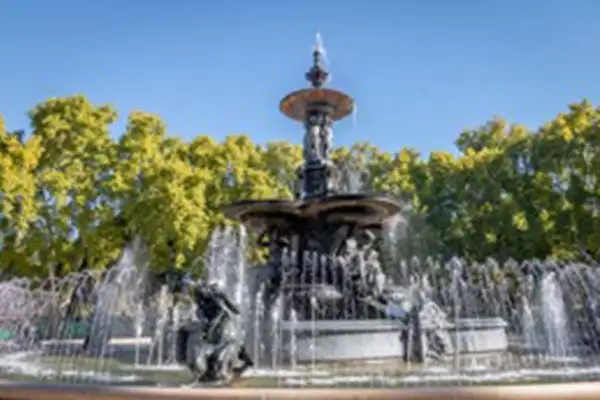
We took a 12-hour bus journey from Cordoba to Mendoza, which was to be our last stop in Argentina and our personal favorite. Throughout most of our South American trip we were able to use the website www.busbud.com which gives accurate (the majority of the time) information about bus journeys. We would use this site to get information on times, bus companies, prices, and likely journey times and then compare against this when we went to the bus stations to buy our tickets.
Although much smaller than Cordoba, there is no shortage of activities to do in Mendoza. We did a sunset horse trek on our first afternoon there, which included a barbeque of some of the best food we had thus far on our travels. We also did a bike tour of some local wineries. We also visited the Cacheuta Thermal Springs, where we splashed out and went to the hotel thermal springs for a full afternoon and enjoyed the sauna and a mud bath, this costs us around $15 each.
Mendoza is a city with an interesting history (worth doing the free walking tour to hear more about this) and feels like a small town disguised as a city. When the Spaniards arrived here the landscape was occupied by the Huarpe Indians, who had created a dam system to enable them to grow different crops. Remnants of this dam system remain today as the modern city has a dam system to irrigate the thousands of trees planted throughout the city. It’s definitely a place I would like to return to.
Day 26-30: Santiago, Valparaiso, and San Pedro de Atacama, Chile
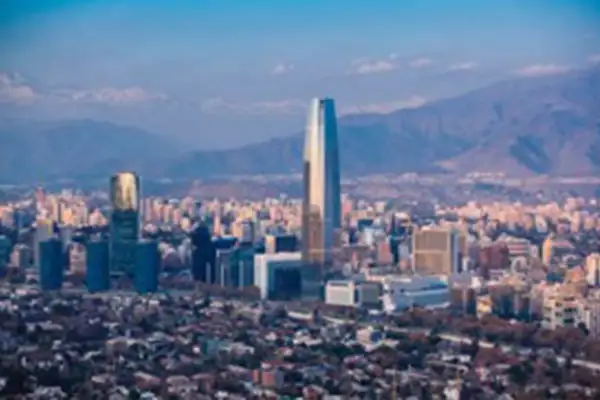
One of our shortest bus journeys was our eight-hour journey from Mendoza across the Andes into Santiago. This includes the couple of hours it took to get through the border crossing between Argentina and Chile, which, although long, was quite straightforward. As were all of our other border crossings. I would definitely recommend checking the visa requirements in advance for each country you intend to visit as they do differ depending on your nationality. For example, in Bolivia there is a requirement for U.S. citizens to get a visa to enter the country and this costs around $160.
The bus journey was stunning. From the start to the end you have fantastic views of the Andes and although hair raising at times driving along narrow, winding roads, it is definitely worth the extra heart palpitations. A possible end to your month of traveling would be to spend a couple of days in Santiago including a day trip to Valparaiso, which is only a couple of hours from Santiago, then back to Santiago to fly home. Alternatively, you could spend some more time in Brazil at the beginning of your trip or cross into Paraguay for a couple of days from Foz do Iguacu and then travel into Argentina through Paraguay. For our trip which was to continue on for a couple of months we spent a couple of days in Santiago then Valparaiso and traveled north through La Serena to San Pedro de Atacama which was a huge highlight for both of us. From there we travelled to Bolivia, then along Lake Titicaca into Peru and up through Peru into Ecuador.
Daily Budget/Budget Breakdown for the Traveling

Our budget was roughly $1,600 per month including $11 to $16 per night on accommodation. This meant our daily budget was roughly $55 per day. We had originally hoped to travel on an even stricter budget and this is definitely possible if you don’t do as many activities and tours as we did, don’t move around as often, stay in the cheapest accommodation possible, and cook the majority of your meals in hostels.
While we had a cheap accommodation budget and spent the majority of our nights in dorm rooms, we didn’t stay in the cheapest hostels as luckily we could stretch our budget a bit to ensure we were comfortable. We did also stay in a lot of double or twin rooms when they were within our budget. We rarely spent over $11 per night on accommodation and in fact often spent below that.
We were keen to try local cuisine in each area we traveled to but this also meant eating out a lot. To compensate for this we would book accommodation that included breakfast, fill up on breakfast, and typically only eat out one meal a day. Filling up on snacks or breakfast leftovers during the day. We would normally be able to get a full meal plus a beer for about $11 each. However, there were some locations (such as Santiago and Chile in general) where we often spent more than that. There were also times we spent a total of $11 for two meals and drinks in places like Bolivia.
What to pack?
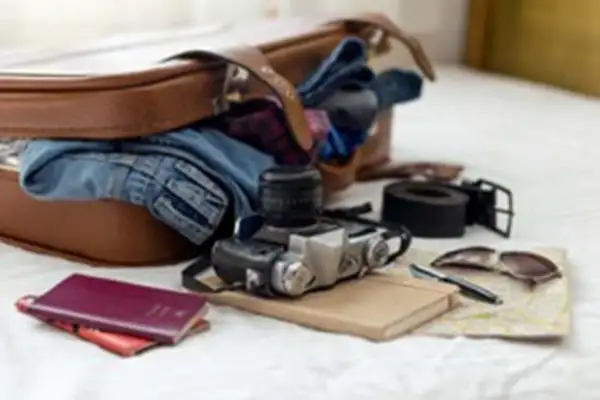
It was difficult deciding to pack, as we knew we would experience different types of weather on our trip. I packed some warm and cool clothes, trek towel, hiking boots, comfortable walking shoes, flip-flops, and sandals. I also packed a first aid kit which I would definitely recommend (add extra plasters) and a sleeping bag which you will definitely need if you plan on trekking. Some of the simpler things like a laundry bag and a padlock as well as a head torch turned out to be the handiest. And of course a swimsuit if you plan on doing any sunbathing.
Is South America Safe to Travel?

We felt safe in all of the countries we visited and didn’t experience any problems. We’ve both traveled a good bit and are very conscious of taking precautions. We were mindful not to carry too much cash, or our passports around with us—unless traveling between places—and we kept these locked in lockers in the hostel. If we had to carry them we kept them on our person in fanny packs at all times and made sure that the fastener of our fanny pack was not easy to open or access. We did hear a couple of stories of phones etc. being stolen but if you keep your wits about you at all times, you do minimize the risk of that happening. As two women traveling, we did receive some attention but if you’ve traveled before this is probably something you are used to.
Overall, I was surprised at how easy it was to get around. In every town we visited no matter how big or small there were always multiple bus companies operating and it was easy to get buses to where we were going. It was definitely a huge advantage that my friend speaks quite good Spanish, although I did pick up the basics. If you can, I would recommend doing a short course before arriving as most people will not speak English. For the most part the people in each country we visited were very friendly and keen to communicate with us. The people as well as the incredibly diverse landscape and vast array of things to see and do all made our trip an incredibly memorable experience.
Related Articles
The World’s Best Places to Retire
